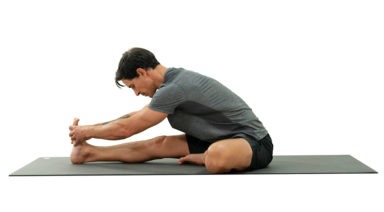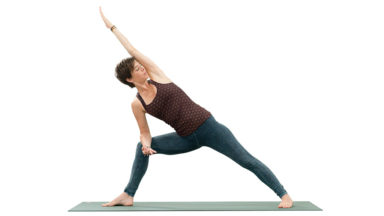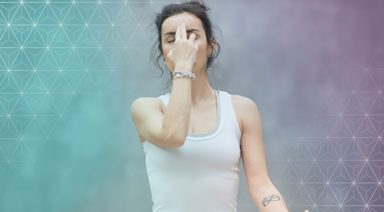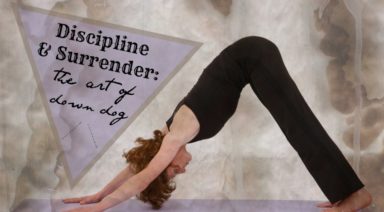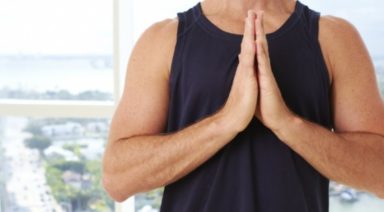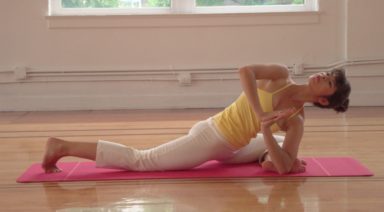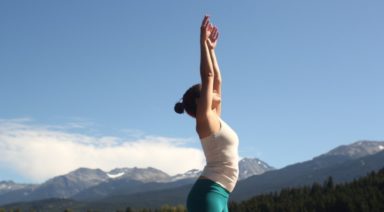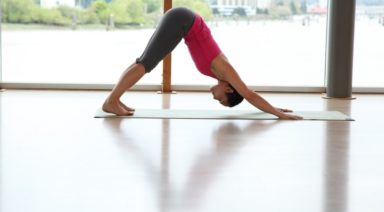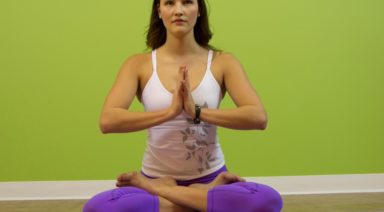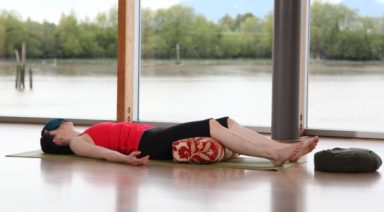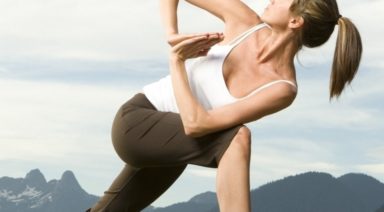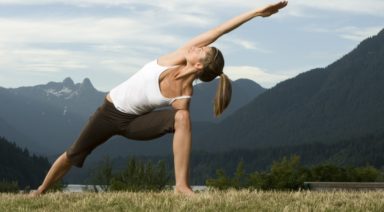Anjaneyasana: Monkey Lunge Pose
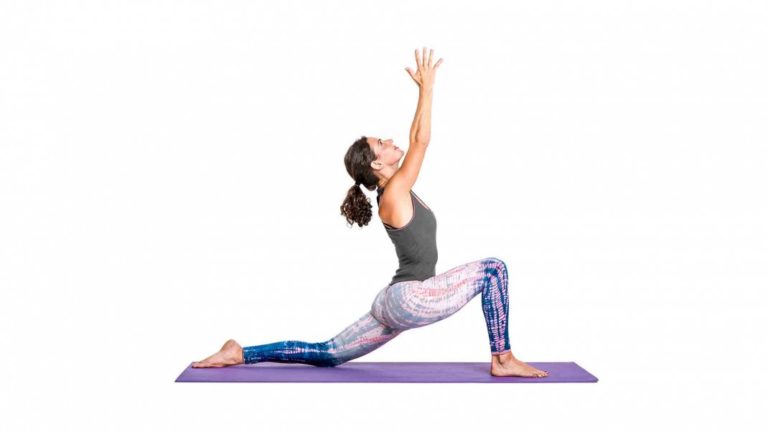
Anjaneyasana (AHN-jah-nay-AHS-uh-nuh), also known as low lunge or monkey lunge, stretches the hips, gluteus muscles, and quadriceps while improving balance, concentration, and core awareness.
Philosophy and Origin:
The term anjaneya is a matronymic reference to the monkey god Hanuman using his mother’s name, Anjani. Lord Hanuman is a central part of Hindu devotional worship, believed to be an incarnation of Lord Shiva. The pose resembles a young, divine child (anjaneya), reaching towards the sky and the warmth of the sun, captivated by a glowing fruit in the sky as depicted in the traditional epic.
Sanskrit:
- Anjaneya: Lord Hanumān, the divine entity of spiritual significance
- Asana: pose
Tips:
This pose stretches the core, hips, gluteus muscles, and quadriceps. Go slowly and don’t push your body beyond its limits.
Physical Benefits:
- Strengthens the quadriceps and gluteus muscles.
- Stretches the psoas and hips.
- Expands your chest, lungs, and shoulders.
Energetic Benefits:
- Develops stamina and endurance in your thighs.
- Improves your balance, concentration, and core awareness.
- Calms the mind.
Mudra: Jnana Mudra
Jnana mudra, the gesture of wisdom, has deep ties to the divine nature of anjanayasana. This mudra is most commonly used for meditation and literally translates to “wisdom sign” or “knowledge gesture.”
Fold your index finger until it touches the base of the thumb. The index forms a circle, but the thumb remains straight out. Gently straighten the other three fingers.
Mantra:
Hanuman Mantra for Success
As this pose is a divine tie-in to Lord Hanuman, wisdom and the power of knowledge and the spirit, the Hanuman Mantra for Success is a perfect pairing for your exercise. Practice this mantra with your pose by repeating the following chant:
Marut nandan namo namah
Kasht bhanjan namo namah
Asur nikandan namo namah
Shri ram dhootam namo namah.
Translation:
I pay my obedience to “the Son of Wind God”, or Lord Hanumana.
I pay my obedience to Lord Hanumana, who is the destroyer of all kinds of sorrows
I pay my obedience to Lord Hanumana, who is the destroyer of asuras, or demons
I pay my obedience to Lord Hanumana, who is the messenger of Lord Rama
Preparatory Poses:
- Downward-facing dog | Adho mukha svanasana
- Wide-legged forward fold | Prasarita padottanasana
- Reclining hero pose | Supta virasana
- Chair pose | Utkatasana
Follow-Up Poses:
- Warrior I | Virabhadrasana I
- Warrior III | Virabhadrasana III
Contraindications and Cautions:
This pose is a gentle, relaxing exercise, but you should still check with a doctor before performing the pose if you have any of the following conditions:
- High blood pressure.
- Knee injuries.
- Those with shoulder problems should not raise their arms above their head, instead placing their hands on their front thigh.
- Those with neck or spinal injuries should not take the backbend variation, and should instead keep their eye gaze forwards or downwards.
Adjustments/Modifications:
- Place a soft foam block or pillow under the back knee for cushioning.
- If raising the arms overhead is uncomfortable, keep your hands on your front thigh.
- If looking up is uncomfortable, keep your gaze down or straight forward.
- To challenge your balance, try this pose with the eyes closed.
- To improve balance, face a wall and press your big toe of the front foot against the wall.
Step-By-Step:
- Start in downward-facing dog. On an exhale, step your right foot forward near your right thumb. Stack your right knee over your right ankle. Lower your left knee to the floor.
- Inhale to reach your arms overhead, chest and head reaching upward. Face your palms toward one another and soften your shoulders down.
- Draw your tailbone done towards the earth, lengthening your lower back and engaging your core muscles.
- Stay here or lift your chest and gaze.
- To release, place your hands down on the mat and step back to down dog. Repeat on the other side.
###Legal Disclaimer Before participating in any exercise program or using any fitness products or services that may be described and/or made accessible in or through the Gaia Website and/or the Services, you should consult with a physician or other healthcare provider. Read more about Gaia’s Terms Of Use.
Janu Sirsasana: Head to Knee Pose

ADJUSTMENTS | BENEFITS | PREP POSES | SANSKRIT | STEPS
Janu sirsasana (JAH-new shear-SHAHS-anna), may look simple, but it combines elements of a forward fold, twist, and side body stretch. Head to knee pose stretches the hamstrings, low back, and groins and can be adjusted to be very challenging or very relaxing.
Philosophy + Origin
While the name of the pose may seem to reveal an intention based on physical anatomy (head to knee pose), janu sirsasana is really all about turning inward and creating space for self-reflection. Instead of focusing on the intensity of the posture — or a desire to bring your head to your knee — turn your attention to the peace and stillness that may be hiding beneath the more prominent sensations.


